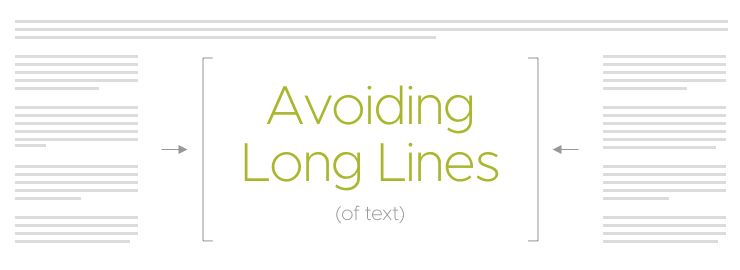During a website design project at Jackrabbit, it’s not uncommon for us to receive the request to make text modules full-width. When this happens, we try to offer alternatives in layout or other solutions, like maxing the content lines out at 75% width or incorporating a sidebar with a call to action. Seeing extra space on the side of a website’s main content column is enticing for some clients to fill it up, and we find ourselves explaining a few things to help them understand our suggestions:
Why should we avoid it?
Long lines of text, or full-width content, are frowned upon in the design world for reasons beyond aesthetics. Have you ever re-read the same line twice or accidentally skipped a line? When we reach the end of the line, our eyes are focused so far from the opposite edge of the text, that it makes it difficult to continue in the correct spot when our eyes return to the beginning of the line.
Great, then we’ll make the lines super short
Well, we shouldn’t go to that extreme, either. When we read, our minds are subconsciously energized to begin a new line and eventually lose focus towards the end. But that doesn’t mean thin columns of text are better. If a line is too short, our eyes get stressed from moving back and forth so often. And that subconscious energy with reading new lines? It leads us to skip lines before reading the previous one fully if the lines are too short.
So, what should we aim for?
The ideal line length runs between 50-75 characters long. There’s no need to count exactly for that character length, but as long as text falls close to or within that range, it lends itself to a comfortable reading experience, much like that of a traditional novel.
